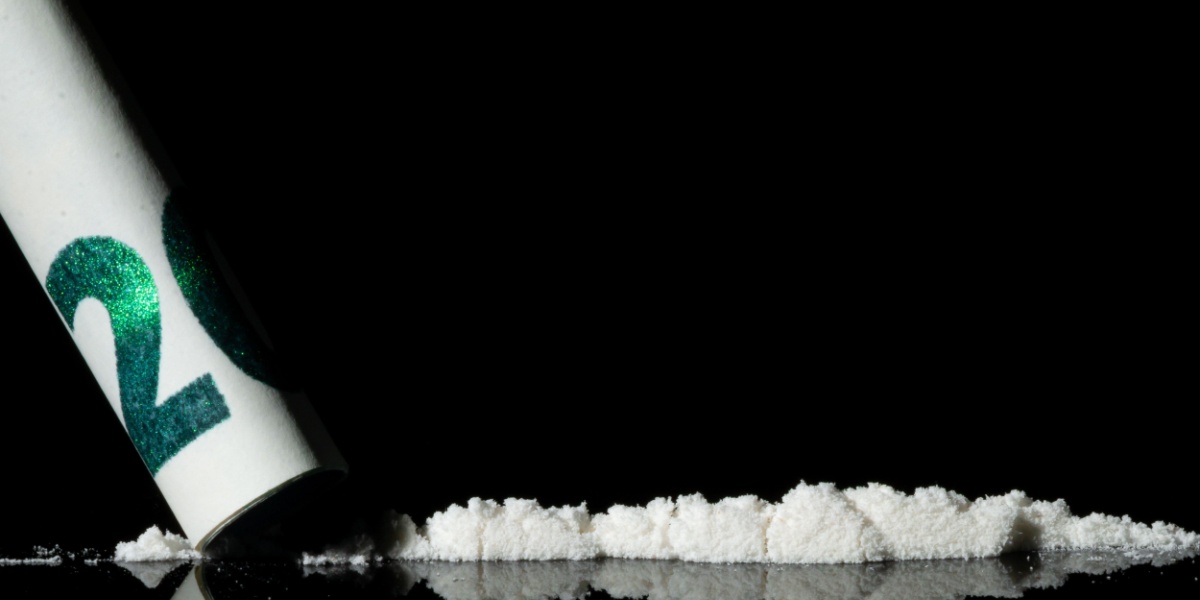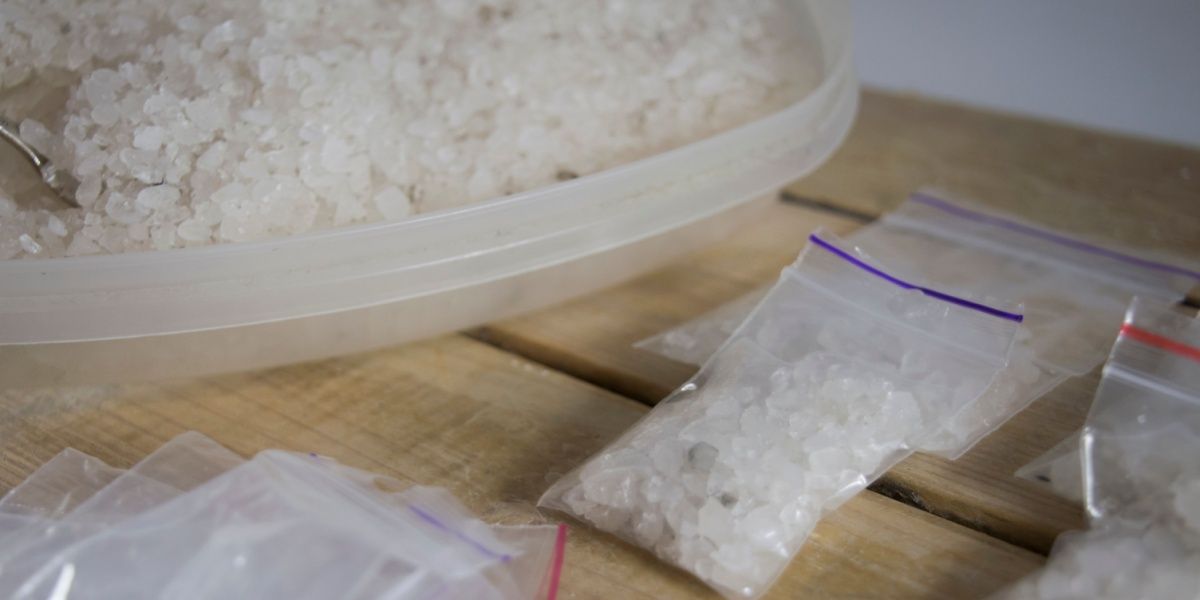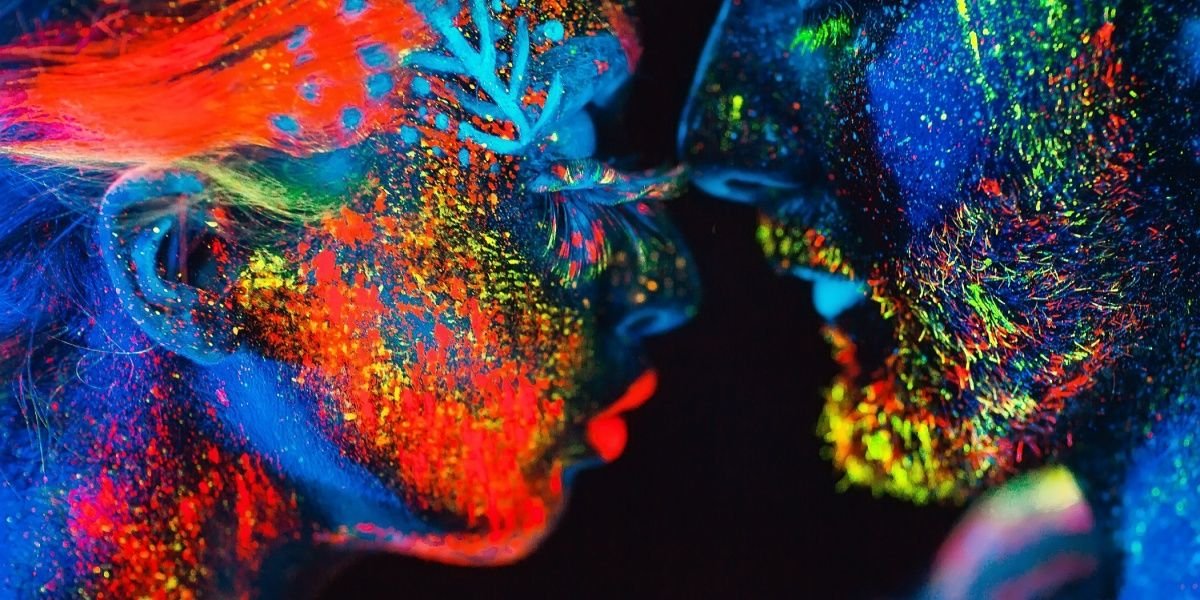Mephedrone, referred to as “meow meow” or “MCAT” in some contexts, is a synthetic psychostimulant drug that only gained popularity in the late 2000s for being a euphoric and energizing substance. It is also widely known as a “chem” that is used during chemsex. It is a cathinone, which is chemically similar to amphetamines.
Though once considered a 'legal high' in some countries, mephedrone is now banned in many regions due to its significant health risks and abuse potential.
In this article, we will examine what mephedrone is, why people use it, its short- and long-term effects, and describe strategies for reducing harm and how to go about treating mephedrone addiction.
- Mephedrone is an amphetamine-type stimulant that can cause short-term euphoric effects and dangerous health risks.
- Dependence and addiction can develop rapidly with problematic mephedrone use, influenced by the drug’s impact on the brain’s reward system.
- Although banned in many countries, harm reduction and appropriate treatment interventions remain critical to address ongoing misuse.

What is mephedrone?
Mephedrone, or 4-methylmethcathinone (4-MMC), is a synthetic cathinone. It is an organically synthesized drug in a lab and chemically related to cathinone, a naturally occurring stimulant in the khat plant (Catha edulis). Around 2007, mephedrone emerged on the recreational drug scene and was initially sold online or in head shops. It was labeled misleadingly as “plant food” or “bath salts.” [1][2]
It quickly gained popularity in London's club scenes due to its stimulant and likable effects, affordability, and ease of access. Mephedrone is chemically and structurally similar to amphetamines and MDMA (ecstasy) and is classified as an amphetamine-type stimulant (ATS). [3] The drug is usually swallowed (typically in pill form), snorted, and, less commonly, injected into a vein.
Because it is not subject to pharmaceutical regulation, one can’t always be sure how pure or potent illicit mephedrone is. This variability increases the risk of adulterant contamination and heightens the potential for harmful side effects. [4] Despite international legal controls, mephedrone remains available on the illicit drug market.
Mephedrone effects: Why do people use mephedrone?
Mephedrone’s popularity among people who use drugs is attributed mainly to its stimulating, euphoric effects. People who use mephedrone describe feeling sociable and report enhanced empathy and a surge of energy, as well as an increase in libido and lower inhibitions. [5] The primary reasons people use it are for: [4]
- Euphoria and sociability: The primary allure lies in the intense sense of well-being, excitement, and increased talkativeness, which can make interactions more pleasurable than usual.
- Alertness and energy: Mephedrone gives people a lot of energy, increases alertness, and reduces fatigue, making it an attractive drug for people who want to stay awake for a prolonged time or who want to dance and party for extended periods.
- Increased libido: Mephedrone causes an increase in sexual arousal and lowered sexual inhibitions. This effect can be risky if it leads to unprotected or otherwise hazardous sexual behaviors.
These effects, while appealing, are short-lived, prompting people to use the drug frequently and thus increasing the risk of dependence and addiction.
Risks and adverse effects of mephedrone
Mephedrone use has short-term and long-term risks. Physiologically, it exerts stress on the heart and vascular system, causing rapid heart rate, high blood pressure, and hyperthermia (elevated body temperature). [4] Psychologically, it can trigger paranoia, as with most psychostimulants, as well as anxiety or panic attacks, and can lead to overamping when used at high doses or combined with other drugs.
Short-term adverse effects
- Increased heart rate and blood pressure may cause an irregular heartbeat
- Dehydration and spikes in body temperature
- Nausea and vomiting
- Decreased appetite
- Anxiety
- Paranoia [4]
Mephedrone addiction
The euphoric rush and relatively short duration of mephedrone’s effects contribute to a pattern of binge and compulsive use. People who use mephedrone take repeated doses over a short period to sustain the desired effect of the drug.
This pattern of compulsive use, a hallmark of dependence, plays a significant role in the risk of developing tolerance and dependence. [4] Other factors contributing to addiction risk include: [4]
- Genetic predisposition
- Polydrug use – Mixing mephedrone with other substances (e.g., alcohol, opioids, or benzodiazepines)
- Environmental factors
- Behavioral, psychological, and social aspects
Furthermore, mephedrone powerfully stimulates the release of dopamine, serotonin, and norepinephrine in the brain’s reward circuitry, causing intense feelings of pleasure and reinforcement. [5] Over time, these surges can cause the brain to adapt (changes in neuroplasticity), requiring more of the drug to achieve the same effect, ultimately resulting in addiction.
However, when a person stops using mephedrone after using it on a chronic basis, they will most likely experience withdrawal symptoms like fatigue, depression, irritability, and cravings. Although withdrawal from stimulants is not typically life-threatening, it can be psychologically distressing, making relapse or failing to quit or cut down on use less likely without proper support and intervention.
Mephedrone-based cocktails: Interactions with other drugs
Mephedrone is frequently combined with other substances to modulate its effects, especially in chemsex and nightlife settings. While people may use these combinations to balance or intensify their experience, they pose serious health risks due to under-researched drug interactions.
Below is a table summarizing how mephedrone interacts with known mixed substances. Please note that mixing drugs is dangerous, and this information is for educational purposes only.
| Substance | Combined Effects with Mephedrone |
|
|---|---|---|
| GHB/GBL |
|
|
| Methamphetamine |
|
|
| Mephedrone (Re-dosing) |
|
|
| Ketamine |
|
|
| Sildenafil (Viagra) |
|
|
| Poppers (Amyl Nitrite) |
|
|
Alcohol
Mephedrone and alcohol is another prevalent mix, especially at music festivals. While mephedrone masks alcohol intoxication, the combination causes strain on the heart or the cardiovascular system and causes dehydration. [7]
Mephedrone overdose
With a mephedrone overdose, the following symptoms can appear: [9]
- Extreme agitation
- Confusion
- Paranoia
- Cardiovascular stress – Racing heart and high blood pressure
- Hyperthermia
- Seizures
In extreme cases, an overdose can lead to acute kidney injury, heart attack, or stroke. [9] If an overdose is suspected, immediate medical attention is paramount. Read more about it here.
Legal status and ban
Is mephedrone legal? In most jurisdictions, the answer is no. However, before 2010, mephedrone occupied a legal gray area in many countries due to its novelty and lack of explicit classification.
Europe and the UK
It first began appearing on the European recreational drug scene, especially in clubs, around 2007, often sold openly in head shops or online under labels like “plant food” or “bath salts.” [4] Because it had not explicitly been banned at the time, producers and distributors could exploit loopholes in existing drug legislation.
This changed rapidly, however, once authorities were alerted to mephedrone’s abuse potential and its connection to hospitalizations and deaths. In the United Kingdom, it was officially classified as a Class B drug in 2010. This ensured that its possession and distribution remained illegal. [4]
United States
In the United States, it is a Schedule I substance, which means that there is no accepted medical use for it and a high potential for misuse. Most notably, the US Federal Analog Act allows the government to classify substances as illegal if they are chemically similar to existing controlled substances. Mephedrone falls under this category because of its chemical structure compared to other illicit drugs.
Enforcement efforts differ from country to country, but penalties for possession and trafficking can be severe.
Despite strict regulations, illicit production and distribution continue, often facilitated by online black markets. The relative ease of synthesizing cathinones also complicates law enforcement efforts, as new derivatives or analogs otherwise classified as novel psychoactive substances (NPS) frequently appear to evade existing bans as they appear on the drug market.
Mephedrone harm reduction strategies
For people who continue to use mephedrone despite the risks, harm reduction strategies can help minimize the harmful effects of using mephedrone:
- Testing the drug quality: Where available, drug-checking services can help identify adulterants.
- Safe environment: If you use it, do so in a setting with trusted friends who can assist in an emergency.
- Hydration and cooling: Frequent water breaks and avoiding hot, crowded environments can reduce the risk of hyperthermia.
- Avoid mixing: Refraining from polydrug use can lower the likelihood of dangerous interactions.
- Dose awareness: Spacing out doses and keeping track of how much is consumed can prevent binge patterns that escalate risks.
- Rest: Always try to get some rest. If you cannot sleep, lie in a cool, dark room with your eyes closed.
- Nutrition: It is important to eat a healthy meal even when using.
- If used during sex, always engage in safe sex practices like using a condom and water-based lube, and using PrEP as recommended by your provider.
- Do not inject mephedrone.
- Do not share any paraphernalia used to consume or use mephedrone.
Harm reduction strategies are a pragmatic way to mitigate some of the harms of mephedrone use. However, it is not a substitute for seeking professional help for problematic use or addiction.
Treatment for mephedrone addiction
Formal treatment for mephedrone addiction usually happens in either an inpatient setting or an outpatient setting. In some instances, people may make use of harm reduction-based settings to assist them with safer drug use practices; however, for problematic stimulant use, this is not popular in the U.S.
In formal treatment settings, mephedrone addiction treatment involves a combination of medical and psychotherapeutic interventions:
- Detox and withdrawal management: Medical supervision may help manage withdrawal symptoms, particularly in severe cases.
- Behavioral therapies: Cognitive Behavioral Therapy (CBT), Motivational Interviewing (MI), and contingency management (CM is superior for stimulant use disorders) can, to a degree, address the psychological underpinnings of addiction.
- Support groups: Peer support networks (e.g., 12-step programs (NA), SMART Recovery) provide long-term strategies for maintaining sobriety.
- Aftercare and relapse prevention: Ongoing counseling and monitoring are extremely important to prevent relapse, especially given the intense cravings associated with stimulant use.
It must be said that the success of these treatments depends on early intervention, tailored care, and a strong support system.



-guide-detail.jpg?v=1722501748)
